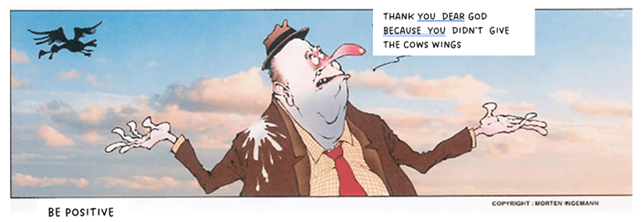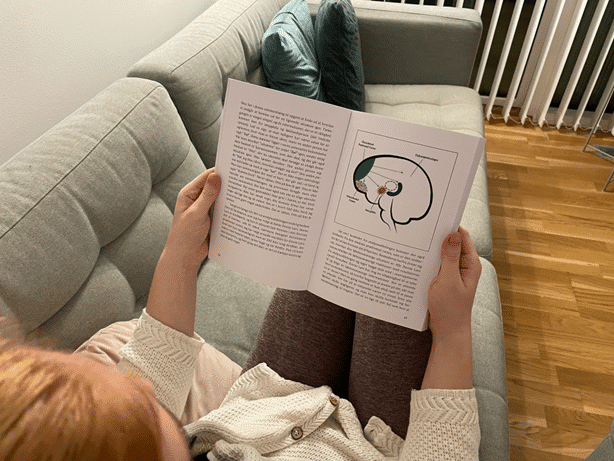Attention Training
For humans, the ability to control attention is the most crucial brain function. By mastering attention control, we can regulate, manage, and reprogram all other brain areas, thereby liberating ourselves from stress, anxiety, depression, and other debilitating conditions.
On this website, you have free access to four attention training games, each taking only two minutes to play. While these games may seem simplistic, research has demonstrated that even a few sessions can induce structural changes in the brain. Typically, it takes about two weeks for an individual to notice a change, though this can vary—some may experience faster results, while for others, it might take longer. The more one practices, the better they become at controlling their attention, enhancing overall mental health and cognitive agility.
- Find the happy face (link to game)
- Colour or text (link to game)
- Speed processing (link to game)
- Which way does the arrow point? (link to game)
Downunder you can choose to read more about attention training: Click on the small +
Why Attention Training?

The regulation and control of attention are among the executive functions, with this capability primarily centered in the prefrontal cortex, particularly within its lateral part.
In home upbringing, as well as in institutional and educational settings, there is an implicit training of executive functions. This training occurs through brain exercises embedded within general education and upbringing, serving more as a byproduct of these processes rather than as a focused training of the area.
Direct attention training is largely absent in conventional education systems, and this deficiency can lead to significant challenges and negative outcomes later in life. Implementing focused attention training programs can help mitigate these issues by strengthening this critical executive function, thereby enhancing overall cognitive resilience and adaptability.
When Others Direct Your Attention: Understanding Emotional Responses and Self-Perception

We all carry “baggage” in the form of our genes, upbringing, norms, and various experiences we have encountered. These influences may have shaped our self-perception, perhaps leading us to believe we are insentive, not good enough, or other similar concerns, which can be termed as our “sensitive spots.”
For instance, if one’s self-perception is of being emotionally detached or insensitive, and another person comments, “You’re so cold,” it hits this sensitive spot, potentially leading to thoughts like, “Maybe I am emotionally blunt.” Such remarks focus our attention inward, and the amygdala in our brain may perceive this as an attack or threat to our survival.
We might respond by becoming sad – which usually elicits care and enhances our survival. Alternatively, we might become aggressive, possibly replying with, “Well, you’re not exactly pleasant either” – again, a survival reaction – or we might respond in a completely different way. Through the statement, “You’re so cold,” the other person has directed our attention.
If we can control our attention, we can shift it from ourselves to the other person to understand their true intent. It may turn out that the other person actually meant to compliment us as being especially skilled, extremely competent, or cool – in a positive light.
It is counterproductive to feel sad or aggressive if someone is complimenting us and they think we are cool. However, if they indeed mean that you are insensitive, then what? If you can control your attention, you might maintain focus on the other person and acknowledge, “Yes, I may be insensitive, and…?” This approach keeps the conversation open and constructive, allowing for a more nuanced understanding and potentially a more meaningful exchange.
Attention Training Enhances All Executive Functions

Executive functions are the higher cognitive capabilities that distinguish humans from animals, particularly when actively engaged. These functions include managing time, planning, problem-solving, imagination, and inhibitory or restraining influence on other brain regions—such as controlling emotional outbursts, consciously learning new things, altering previously learned patterns, and directing attention.
In the field of neuropsychology, executive functions are often referred to as the “CEO of the brain.” This metaphor highlights their role in steering and regulating the rest of the brain’s activities. Among these executive functions, managing attention is considered the most crucial. It serves as the foundation upon which all other executive functions are built, enabling us to coordinate and enhance our mental processes effectively.
Inhibitory Function on Other Brain Regions

When we encounter someone of the opposite sex, our reptilian brain instinctively reacts with the desire for sex. However, thanks to trained executive functions, we can shift our attention away from these instincts and thus inhibit them. This allows us to behave civilly and not assault others.
During alcohol consumption, the executive functions become impaired to varying degrees, allowing instincts to prevail. This is why violations often occur at parties and festive occasions where alcohol is consumed. If one has trained in managing and controlling attention, one can still control these instincts, even when influenced by alcohol.
When a person becomes emotionally distressed, it is the reptilian brain that reacts. However, if the executive functions are well-trained, we can divert our attention away from these emotions and thus inhibit them. For instance, when we feel sadness due to a breakup, it is the reptilian brain reacting. It may take weeks, months, or even years to recover. Once we do, it’s because our attention has shifted away from what we’ve lost.
With trained attention, we do not have to suffer for weeks, months, or years; we can redirect our attention within 20 seconds. This does not mean that we should not feel sad; of course, we can. The key is that we decide how long we want to remain sad by controlling our attention.
This same principle applies when we feel angry, offended, scared, or experience other negative emotions. We have the power to decide how long we wish to feel that way.
Attention Training Increases Your Attentional Budget

We each have a limited attentional budget at our disposal. In English, we often say “pay attention,” indicating that attention is a resource we expend. Overdrawing on this budget can lead to problems. Consider trying to parallel park while simultaneously calculating 23 x 47 in your head. You are likely to either miscalculate or collide with other cars due to exceeding your attentional budget.
Research indicates that, when untrained, individuals may spend as much as 80% of their attentional budget on suppressing thoughts and emotions. Continuing with the parallel parking example, if one cannot control their attention, intrusive thoughts may arise, such as “I hope I don’t dent the car,” “What are those onlookers thinking?”, or “I’m bad at driving.” These thoughts and emotions demand a significant amount of attention and require considerable effort to suppress, leaving little available for the task of parking itself.
For those untrained in attention management, only about 20% of their attentional resources might be left for the actual task of parking. However, with trained attention control, this ratio can be reversed, allowing up to 80% of attentional resources to be allocated to parking. Therefore, attention training is a form of mental training that enhances performance by optimizing how attentional resources are allocated.
Attention Training – The Best Form of Brain Training

Without resorting to any complex exercises, the simplest form of brain training involves posing the question to oneself: “What good can be found here?” This form of attention training is accessible to everyone, regardless of the situation they find themselves in. As the old adage goes, “There is nothing so bad that it isn’t good for something.” It is merely a matter of discovering it. Train your brain by asking yourself the right questions.
Children and Attention Training
Children and Attention Training
In optimizing the brain and its functions, attention training is paramount among all executive functions. This is evident in the training of individuals with brain injuries. Attention training precedes all other cognitive functions in the rehabilitation process following brain injuries.
When one is able to control attention, it becomes possible to choose whether to feel happy or upset. This choice depends solely on what one focuses their attention on. Many parents utilize this technique unconsciously. For instance, when a child is upset, parents redirect the child’s thoughts towards something else, leading to a change in emotion to happiness. Through this method, children learn from their parents how to manage their attention. Research experiments have shown that children who could control their attention at the age of four were also able to manage their emotions better and scored significantly higher on intelligence tests as adults.
As adults, when we find ourselves stuck in a loop of negative thoughts or emotions, it would be beneficial if someone could intervene and redirect our focus, similar to how we do with children. However, we do not need someone else to say, “Look here.” We can do it ourselves—we can decide to shift our attention to something more positive.
Avoiding Stress, Anxiety, and Depression

Have you ever reached the end of a page in a book only to realize that you are not aware of what you’ve read? Your eyes may have tracked each word and line, but you recall none of it. The act of reading—moving the eyes from word to word—occurred as an automated process without conscious awareness. Where did the attention go?
The attention was captured somewhere on the page, and by rereading, one can pinpoint exactly where this occurred. There are various reasons why attention gets captured, but it happens unconsciously.
When experiencing stress, anxiety, or depression, the same mechanisms are at play. Attention is unconsciously seized, and one continues with whatever they were doing, more or less unaware. One can trace back to the exact moment the attention was captured and liberate it once again.
Typically, attention is captured by a word or phrase that triggers a chain of thoughts. For instance, the phrase “I can’t manage everything” might lead to subsequent thoughts like “I’m not good enough,” “what will others think?”, or “there’s too much to do.” Thoughts like these lead to stress because one experiences what they focus on, even though it occurs unconsciously.
Attention Training Aids Individuals with Dyslexia

Dyslexia, commonly described as a persistent congenital impairment, involves difficulties with reading, spelling, and writing. Classified as congenital and enduring, dyslexia often leads to a resignation that nothing can be done about these challenges. As a result, approximately 7% of the population is identified as dyslexic.
However, interventions are possible in many cases. Consider individuals who can read letters but often transpose them. By asking someone with dyslexia to read letters aloud, one can gain insights into where the error occurs.
The core issue here is an inability to control attention, causing their eyes to wander. Training to manage their attention could potentially remediate their so-called incurable dyslexia. For instance, when they begin reading letters, it becomes apparent that they might jump from, say, the first letter to the fifth, then to the third, second, and fourth. This pattern is also observed with whole words as they do not take them in sequence.
Attention control training might offer a solution to their dyslexia. A research project in Australia demonstrated that 93% of a randomly selected group of children made significant progress after just 40 minutes of attention training per week over 16 to 20 weeks. Free attention training exercises are available on this website.
ADHD, ADD, and Other Attention Disorders

The Psychological Associations defines attention disorders as a group of developmental disturbances characterized by persistent symptoms related to inattention (e.g., lack of sustained focus or difficulty concentrating). These disorders may include elements of behavioral disturbances and/or hyperactivity, as seen in ADHD, or be confined solely to difficulties with attention and concentration, as in ADD.
The conventional treatment involves medication or strategies to help affected individuals cope with their difficulties. Medication does not eliminate the problem but only mitigates the symptoms. However, as the definition indicates, there is an underlying issue with attention regulation. To better articulate this concept, I have termed it the “kitten syndrome.”
Imagine a kitten and how its attention shifts to other things as soon as there is movement. This analogy reflects how individuals with attention disorders experience the world. Training to manage attention can, in many cases, effectively address this issue.
Research, including studies from the University of Texas Southwestern Medical Center, has shown that attention training for children with ADHD offers significant benefits in their ability to manage attention. This training also positively impacts other executive functions.
